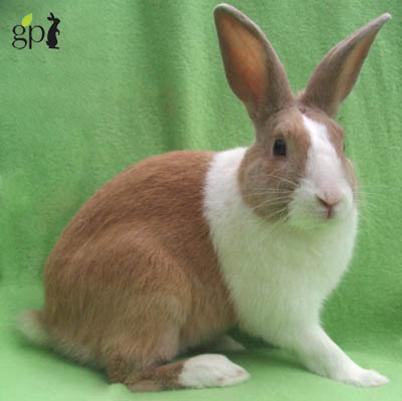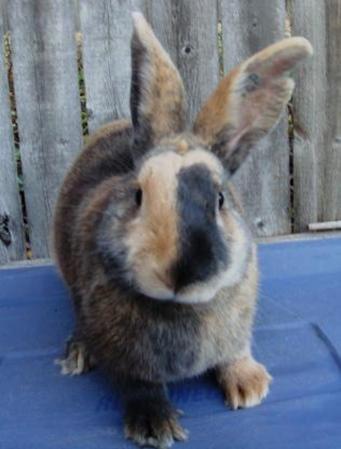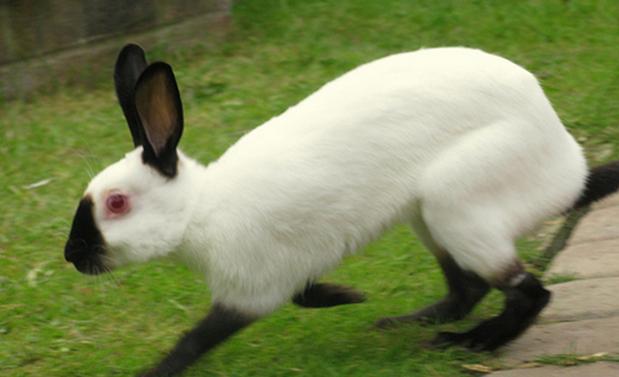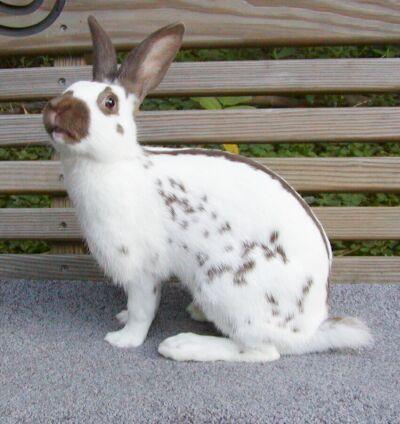THINK ABOUT IT...
Use the descriptions on the left to identify the pictures below with the correct marking type.
A.
B.
C.
D.

Various markings attract the interest of many individuals to raise a
specific breed of rabbits. There are marked breeds that have various
sizes, ear lengths and carriages, body shapes, fur structures and
lengths of fur. Many marked breeds are very popular to the fancier
(a person who is interested in the show quality or beauty of the breed) and the pet owner.
These breeds are generally considered more difficult to breed than a solid colored rabbit. This is because one must give consideration to the correctness of the markings in addition to the type and fur/wool. This fact must be given consideration when youth select a breed of rabbits. It may be advisable to reserve the marked breeds for individuals that have some experience or adult assistance.
Some breeds are known by their specific markings. These include:
Harlequin: This breed is the "clown" of the rabbit fancy because of the marking arrangements. Marking is more important (60 points) in this breed than any other recognized breed. The breed is divided into 2 groups and each group has 4 varieties (colors). The colors on a Harlequin alternate on each side - the more distinct the pattern, the higher the score. Look at the breed standard for more information on its markings.
English Spot: This is a breed that matures at 5-8 pounds, has an arched body shape and has 56 points allocated to markings. There are 7 recognized varieties and the Black is most popular in most areas. The markings are unique and attractive; but, somewhat difficult for the beginner to understand. The English Spot has scattered spots on both sides of its body with a distinct line that runs along its spine. Its nose and ears are colored.
Dutch: This is a breed of circles and roundness. The head should be round and set on a round compact body. There are 6 varieties of Dutch and they mature at 3 ½ to 5 ½ pounds. The markings account for 50% of the total points allocated to the breed. The Dutch has a white band around the front half of its body. The second half of the body is colored.
Himalayan: This breed has cylindrical body type and 43 points allocated to markings. They mature at 2 ½ to 4 pounds. This is the only breed posed in a stretched out position. It has dark points on the nose, ears, feet and tail.
